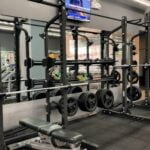When it comes to maintaining strong and healthy bones, osteo fitness exercises play a crucial role in promoting bone strength and overall well-being. Osteoporosis, a condition characterized by decreased bone density and increased risk of fractures, underscores the importance of incorporating specialized exercises into one’s fitness routine. Understanding the significance of bone health is essential not only for physical appearance but also for longevity and quality of life.
Osteo fitness exercises are specifically designed to target bone health by improving bone density, muscle strength, and balance. As we age, our bones naturally weaken, making us more susceptible to fractures and other injuries. However, engaging in regular osteo fitness workouts can help mitigate these risks and maintain optimal bone health. By focusing on weight-bearing exercises, resistance training, and flexibility workouts, individuals can enhance their overall skeletal structure and reduce the impact of conditions like osteoporosis.
The benefits of osteo fitness exercises extend beyond just physical strength – they also contribute to improved balance, coordination, and overall quality of life. Incorporating a variety of routines that target different muscle groups and bone regions can lead to significant improvements in one’s ability to perform daily activities with ease and confidence. As we delve into the world of osteo fitness, it becomes clear how essential these exercises are for maintaining strong bones throughout our lives.
Understanding Osteoporosis
Osteoporosis is a common condition that affects bone density, making bones weak and susceptible to fractures. This condition can be particularly worrisome as people age, leading to increased risk of falls and injuries. Osteoporosis is often referred to as a “silent disease” because it progresses without any symptoms until a fracture occurs. That’s why understanding the impact of osteoporosis on bone density is crucial in taking proactive measures to maintain strong bones through specialized exercises.
To combat the effects of osteoporosis on bone health, specialized exercises known as osteo fitness exercises are recommended. These exercises target specific muscle groups and bone regions to improve bone strength, balance, and overall quality of life. Incorporating osteo fitness exercises into your routine can help prevent further loss of bone density and reduce the risk of fractures.
Some examples of osteo fitness exercises include:
- Weight-bearing exercises such as walking, hiking, dancing, or stair climbing
- Resistance training with weights or resistance bands to strengthen muscles and bones
- Flexibility workouts like yoga or tai chi to improve balance and coordination
By regularly engaging in these types of exercises, individuals can not only slow down the progression of osteoporosis but also improve their overall bone health and quality of life. It is important to consult with a healthcare provider or fitness professional before starting any new exercise program, especially if you have existing health conditions or concerns. Stay proactive about your bone health by incorporating osteo fitness exercises into your daily routine for long-term benefits.
Benefits of Osteo Fitness Exercises
Osteo fitness exercises play a crucial role in improving bone health, enhancing balance, and ultimately increasing the overall quality of life for individuals. By incorporating specific exercises aimed at strengthening bones, individuals can reduce the risk of osteoporosis and fractures as they age. These specialized exercises not only benefit bone density but also contribute to improved muscle strength, posture, and coordination.
There are numerous benefits associated with regularly performing osteo fitness exercises. Some of the primary advantages include increased bone mineral density, which helps prevent fractures and maintain strong bones. Additionally, these exercises can improve balance and stability, reducing the likelihood of falls among older adults. Enhanced muscle strength is another significant benefit that can help support joints and overall mobility.
To reap the full benefits of osteo fitness exercises, it is essential to incorporate a variety of workout routines that target different muscle groups, including weight-bearing exercises, resistance training, and flexibility workouts. These types of exercises not only stimulate bone growth but also promote overall physical well-being. By engaging in a well-rounded osteo fitness routine, individuals can achieve maximum results in terms of bone strength, balance improvement, and quality of life enhancement.
- Increased bone mineral density
- Improved balance and stability
- Enhanced muscle strength
Types of Osteo Fitness Exercises
Osteo Fitness Exercises Can Significantly Improve Bone Health:
When it comes to maintaining strong and healthy bones, osteo fitness exercises play a crucial role. These specialized exercises are designed to improve bone density, prevent the development of osteoporosis, and reduce the risk of fractures as we age. By incorporating a variety of weight-bearing exercises, resistance training, and flexibility workouts into your routine, you can significantly enhance your bone strength and overall quality of life.
Weight-Bearing Exercises
Weight-bearing exercises are essential for building and maintaining bone density. Activities such as walking, jogging, hiking, dancing, and aerobics put stress on the bones, which helps stimulate new bone growth. These exercises not only strengthen the bones but also improve balance and coordination, reducing the risk of falls and fractures in the long run. Incorporating weight-bearing exercises into your regular workout routine can have a significant impact on your bone health.
Resistance Training
Resistance training is another important component of osteo fitness exercises that focuses on strengthening muscles and bones. By using resistance bands, free weights, or weight machines, you can target specific muscle groups that support bone structure. This type of exercise helps increase muscle mass, improve bone density, and enhance overall strength. Including resistance training in your osteo fitness routine can help maintain healthy bones and prevent bone loss over time.
Flexibility Workouts
In addition to weight-bearing exercises and resistance training, flexibility workouts are also beneficial for bone health. Stretching exercises help improve joint mobility, reduce muscle stiffness, and enhance flexibility. Maintaining good flexibility is essential for preventing injuries and falls that can lead to fractures.
Including stretching routines in your osteo fitness regimen can help keep your bones strong and resilient as you age. Remember to incorporate all three types of exercises – weight-bearing activities, resistance training, and flexibility workouts – in order to achieve optimal benefits for your bone health with consistent commitment to an osteo fitness regimen.
By exploring these different types of osteo fitness exercises mentioned above within a structured workout plan tailored to individual needs, one can effectively strengthen their bones,reinforce musculoskeletal structures ,and minimize risks associated with decreasing bone density over time.
Prioritizing regular participation in osteo fitness regime has been shown to greatly contribute towards enhanced well-being through improved physical functionality evidenced by better balance, muscular strength as well as agility assisting individuals navigate through daily activities more independently at advanced stages in life.
For long-term management & prevention against diseases like Osteoporosis which may gradually weaken one’s skeletal system ; undertaking these recommended programs provides a proactive approach towards mitigating potential adversities associated with degenerative conditions benefiting holistic health outcomes in longer terms.
Safety Guidelines
Consult With a Healthcare Professional
Before starting any osteo fitness exercises, it is crucial to consult with a healthcare professional, especially if you have a history of bone-related issues or other medical conditions. A doctor or physical therapist can provide valuable insights into the types of exercises that are safe and appropriate for your specific health needs. They can also help in identifying any potential risks or limitations that should be considered before embarking on an osteo fitness routine.
Start Slowly and Progress Gradually
It is essential to start slowly when beginning osteo fitness exercises, especially if you are new to this type of workout. Gradually build up the intensity, duration, and frequency of your workouts to allow your body to adapt and prevent injuries. Avoid pushing yourself too hard too soon, as this can lead to strain or fractures in weakened bones. Listen to your body and give yourself time to progress at a pace that feels comfortable and safe for you.
Use Proper Form and Technique
Proper form and technique are key when performing osteo fitness exercises to ensure maximum effectiveness and minimize the risk of injury. Make sure to maintain good posture, engage the correct muscles, and follow the recommended movement patterns for each exercise.
If you are unsure about how to perform a specific exercise correctly, consider seeking guidance from a qualified fitness instructor or physical therapist. Remember that quality over quantity is essential when it comes to osteo fitness exercises for optimal bone health.
Sample Osteo Fitness Routine
Osteo Fitness Exercises are essential for maintaining strong bones and overall bone health. By incorporating a variety of exercises into your fitness routine, you can improve bone strength, balance, and reduce the risk of osteoporosis. Weight-bearing exercises, resistance training, and flexibility workouts are all key components of an effective osteo fitness routine.
Weight-bearing exercises such as walking, jogging, dancing, or hiking are beneficial for building and maintaining bone density. These activities put stress on the bones, which stimulates them to become stronger over time. Resistance training using weights or resistance bands helps to increase muscle mass and also strengthens bones by putting additional stress on them.
In addition to weight-bearing and resistance exercises, flexibility workouts can help improve balance and prevent falls that may lead to fractures. Stretching routines that focus on different muscle groups can also help maintain joint health and range of motion. It is important to consult with a healthcare provider or fitness professional before starting any new exercise program, especially if you have existing joint issues or other medical conditions that may impact your ability to perform certain exercises.
| Exercise Type | Description |
|---|---|
| Weight-Bearing Exercises | Activities like walking, jogging, dancing |
| Resistance Training | Using weights or resistance bands to build muscle strength |
| Flexibility Workouts | Stretching routines to improve balance and range of motion |
Osteo Fitness Equipment
Osteo fitness exercises are crucial for maintaining strong bones and overall bone health, especially as individuals age. In order to effectively perform these exercises and reap the benefits they offer, it is essential to have the right equipment on hand. One of the key pieces of equipment for osteo fitness exercises is weights. Whether using dumbbells, kettlebells, or barbells, incorporating weight-bearing exercises into your routine can help increase bone density and improve muscle strength.
Resistance bands are another important tool for osteo fitness workouts. These bands provide a different type of resistance compared to traditional weights, allowing for a variety of movements that target different muscle groups. Resistance bands are lightweight, portable, and versatile, making them an excellent option for individuals looking to add variety to their exercise routine while focusing on bone health.
Balance tools are also essential when it comes to osteo fitness exercises. Improving balance not only helps prevent falls and injuries but also strengthens the bones in the lower body. Balance tools such as stability balls, wobble boards, and balance pads can challenge coordination and stability while engaging muscles throughout the body. By incorporating these tools into your osteo fitness routine, you can enhance your overall physical well-being and support healthy bones for years to come.
| Equipment | Benefits |
|---|---|
| Weights (dumbbells, kettlebells, barbells) | Increase bone density and improve muscle strength |
| Resistance Bands | Provide versatile resistance for various muscle groups |
| Balance Tools (stability balls, wobble boards, balance pads) | Improve coordination and strengthen lower body bones |
Success Stories
Osteo fitness exercises have proven to be instrumental in improving bone health and overall well-being for many individuals who are at risk of or currently dealing with osteoporosis. These specialized workouts not only help in maintaining bone density but also play a crucial role in enhancing balance, strength, and quality of life.
By incorporating a variety of weight-bearing exercises, resistance training, and flexibility workouts into their routines, individuals can significantly reduce the risk of fractures and improve their overall physical function.
One of the key benefits of engaging in osteo fitness exercises is the positive impact they have on individuals’ confidence and independence. As bones become stronger and muscles more toned through consistent workouts, individuals often find themselves more capable of performing daily tasks without fear of injury. This newfound sense of empowerment can lead to improved mental well-being and a greater sense of self-assurance in navigating everyday activities.
Success stories abound among those who have committed to regular osteo fitness exercises. Whether it’s through dedicated adherence to a workout routine, the support of knowledgeable trainers, or sheer determination to improve one’s health, these individuals serve as inspiring examples for others looking to embark on their own journey towards better bone health.
With proper guidance, safety precautions, and a positive mindset, anyone can start reaping the benefits of osteo fitness exercises and pave the way for a stronger, healthier future.
Frequently Asked Questions
What Is the Best Exercises for Osteoporosis?
Weight-bearing exercises are considered the best for osteoporosis. These exercises include activities where you are on your feet and your bones support your weight, such as walking, hiking, dancing, jogging, or stair climbing.
What Are 3 Exercises to Improve Bone Health?
Three exercises to improve bone health are weightlifting, resistance training, and yoga. Weightlifting helps build bone density through increased resistance on the bones. Resistance training uses body weight or equipment to strengthen muscles and bones. Yoga improves balance and flexibility which can prevent falls and fractures.
What Is the Most Osteogenic Exercise?
The most osteogenic exercise is generally considered to be weightlifting or strength training. This type of exercise puts stress on the bones, stimulating them to make new cells and increase mineral density. By regularly challenging your bones in this way, you can help improve bone health and reduce the risk of osteoporosis.

Passionate about providing useful information to anyone with an interest in the field of Personal Training, I strive to pass on to our readers quality information and to answer any questions about Personal Trainers, the work they do and how to become one.





